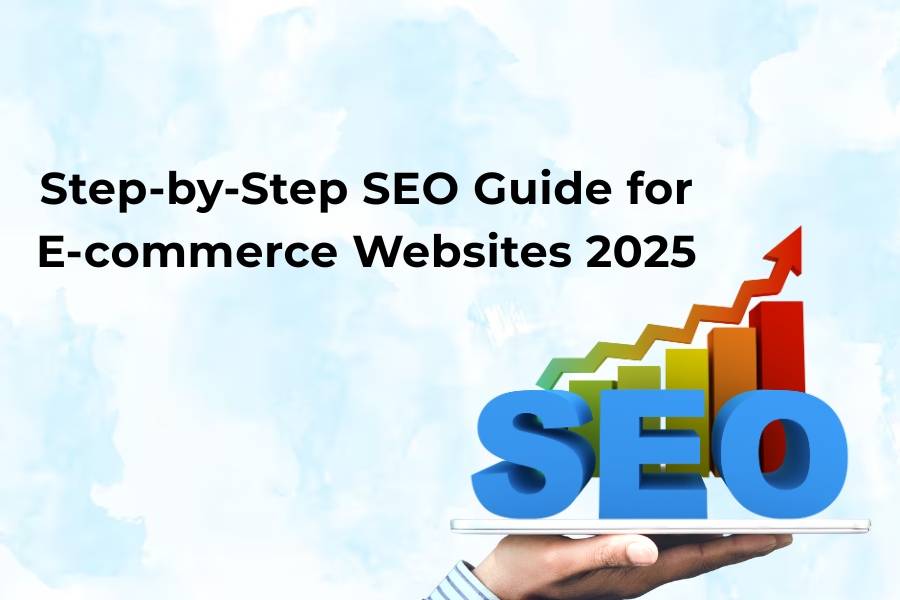
The e-commerce industry in India is growing at an unprecedented pace, with millions of businesses shifting online to reach wider audiences. However, launching an online store is just the beginning—success depends on how easily customers can discover your website. That’s where SEO (Search Engine Optimization) comes in. A strong SEO strategy helps your e-commerce business rank higher on Google, drive organic traffic, and ultimately boost sales. If you’re an online store owner looking to grow in 2025, this step-by-step SEO guide for e-commerce websites will show you the way. For expert help, partnering with a trusted SEO Company can take your online store to the next level.
SEO Guide for E-commerce Websites
Learn how to optimize your e-commerce website for SEO in 2025 with this step-by-step guide. Increase visibility, drive organic traffic and boost sales!
Step 1: Conduct Comprehensive Keyword Research
The foundation of e-commerce SEO is keyword research. You need to understand what potential buyers are searching for before they land on your website.
-
Use tools like Google Keyword Planner, Ahrefs, or SEMrush.
-
Target transactional keywords like “buy shoes online” or “best smartphones under 20,000.”
-
Focus on long-tail keywords that capture buyer intent, such as “organic skincare products for dry skin.”
-
Analyze competitor keywords for better insights.
A professional SEO Marketing in Jaipur can help you discover high-converting keywords tailored to your business.
Step 2: Optimize On-Page SEO
On-page SEO ensures your e-commerce website is search engine–friendly. Important elements include:
-
Title Tags & Meta Descriptions: Write unique titles and descriptions with your target keywords.
-
Header Tags (H1, H2, H3): Structure content logically with keywords placed naturally.
-
Product Descriptions: Avoid duplicate manufacturer descriptions—create unique, keyword-rich content for every product.
-
Image Optimization: Use alt text with keywords and compress images for faster loading.
For example, if you’re selling ethnic wear, your product page should include detailed descriptions like “designer lehenga for weddings in India” rather than just “lehenga.”
Step 3: Improve Technical SEO
Search engines prioritize websites that provide a smooth user experience. Pay attention to:
-
Mobile Optimization: With mobile commerce dominating in 2025, your site must be responsive.
-
Fast Loading Speed: Use tools like PageSpeed Insights to identify bottlenecks.
-
HTTPS Security: Secure your site with SSL certificates.
-
Clean URL Structure: Use simple, keyword-friendly URLs like
/men-sports-shoesinstead of/product?id=1234.
Technical SEO can be complex, which is why many businesses rely on an SEO Company in Jaipur to get it right.
Step 4: Build a Strong Site Architecture
A well-structured e-commerce website makes navigation easier for both users and search engines.
-
Create a hierarchical structure (Home → Category → Subcategory → Product).
-
Use internal linking to guide users and distribute link equity.
-
Implement a search-friendly sitemap for Google indexing.
Clear site navigation not only boosts rankings but also improves customer experience, leading to higher conversions.
Step 5: Focus on Content Marketing
Content is the backbone of SEO. Beyond product pages, your e-commerce website should have a blog section to attract traffic and engage users.
Examples of content ideas:
-
Buying guides (e.g., “Top 10 Running Shoes for Beginners in 2025”).
-
How-to blogs (e.g., “How to Choose the Best Skincare Routine for Oily Skin”).
-
Seasonal content (e.g., “Best Diwali Gift Ideas Online”).
Publishing high-quality, keyword-rich blogs increases your chances of ranking for a wide range of searches.
Step 6: Build High-Quality Backlinks
Backlinks are like votes of trust from other websites. To build authority:
-
Reach out to bloggers and influencers for product reviews.
-
Write guest posts for high-authority websites.
-
Get listed on directories relevant to your niche.
-
Create shareable infographics or resources.
Strong backlinks from trusted sites can dramatically improve your search rankings.
Step 7: Leverage Local SEO
If you operate locally as well as online, local SEO can be a game-changer.
-
Create and optimize a Google Business Profile.
-
Add your business to local directories.
-
Target location-based keywords like “best SEO Company in Jaipur” or “buy home décor in Jaipur.”
This ensures that your store attracts nearby customers as well as online buyers.
Step 8: Monitor and Optimize Performance
SEO is not a one-time task—it’s an ongoing process. Regularly track your performance using tools like:
-
Google Analytics (to measure traffic and conversions).
-
Google Search Console (to monitor indexing and errors).
-
SEO tools like Ahrefs or SEMrush (to track rankings and backlinks).
Make adjustments to your strategy based on what works best for your store.
Conclusion
A well-executed SEO strategy can transform your e-commerce business in 2025. From keyword research and on-page optimization to content marketing and local SEO, every step plays a crucial role in boosting your website’s visibility and sales. If you want professional guidance, partnering with an experienced Novel Web Team will ensure your online store gets the best results. With expert strategies, your e-commerce business can achieve sustainable growth, attract quality traffic, and maximize conversions.
Make 2025 the year your online store reaches new heights with SEO.



